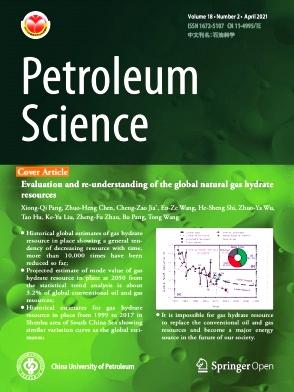Research on the pollution and damage mechanism of drilling fluid on casing during ultra-deep well drilling process
IF 6
1区 工程技术
Q2 ENERGY & FUELS
引用次数: 0
Abstract
In drilling ultra-deep wells, the drilling fluid circulation usually causes erosion damage to downhole casing and drilling tools. However, the extent and process of this damage to the downhole tools is intricate and less understood. In order to systematically evaluate and clarify this damage process for different types of drilling fluid contamination, this research uses a high-temperature drilling fluid damage device to simulate the damage caused to the casing/drilling tools by various drilling fluid under a field thermal gradient. The results show that the drilling fluid residues are mainly solid-phase particles and organic components. The degree of casing/tool damage decreases with an increase in bottom hole temperature, and the casing/tool is least damaged within a temperature range of 150–180 °C. Moreover, the surface of the casing/tool damaged by different types of drilling fluid shows different roughness, and the wettability of drilling fluid on the casing/tool surface increases with an increase in the degree of roughness. Oil-based drilling fluid have the strongest adhesion contamination on casing/drilling tools. In contrast, polysulfonated potassium drilling fluid and super-micro drilling fluid have the most potent erosion damage on casing/drilling tools. By analyzing the damage mechanism, it was established that the damage was mainly dominated by the abrasive wearing from solid-phase particles in concert with corrosion ions in drilling fluid, with solids producing many abrasion marks and corrosive ions causing a large number of pits. Clarifying drilling fluid's contamination and damage mechanism is significant in guiding the wellbore cleaning process and cutting associated costs.
超深井钻井过程中钻井液对套管的污染破坏机理研究
在超深井钻井中,钻井液循环通常会对井下套管和钻具造成侵蚀破坏。然而,这种井下工具损坏的程度和过程是复杂的,人们对其知之甚少。为了系统地评价和阐明不同类型钻井液污染对套管/钻具的损害过程,本研究采用高温钻井液损害装置,模拟了在现场热梯度下不同钻井液对套管/钻具的损害。结果表明:钻井液残留物主要为固相颗粒和有机组分;套管/工具的损坏程度随着井底温度的升高而降低,在150 ~ 180℃的温度范围内,套管/工具的损坏程度最小。不同类型钻井液损伤的套管/工具表面粗糙度不同,钻井液对套管/工具表面的润湿性随粗糙度的增加而增加。油基钻井液对套管/钻井工具的附着污染最强。相比之下,聚磺酸钾钻井液和超微钻井液对套管/钻井工具的侵蚀损害最为严重。通过对损伤机理的分析,认为损伤主要是固相颗粒与钻井液中的腐蚀离子共同作用造成的磨粒磨损,固体产生大量磨损痕迹,腐蚀离子产生大量凹坑。澄清钻井液的污染和破坏机制对于指导井筒清洁过程和降低相关成本具有重要意义。
本文章由计算机程序翻译,如有差异,请以英文原文为准。
求助全文
约1分钟内获得全文
求助全文
来源期刊

Petroleum Science
地学-地球化学与地球物理
CiteScore
7.70
自引率
16.10%
发文量
311
审稿时长
63 days
期刊介绍:
Petroleum Science is the only English journal in China on petroleum science and technology that is intended for professionals engaged in petroleum science research and technical applications all over the world, as well as the managerial personnel of oil companies. It covers petroleum geology, petroleum geophysics, petroleum engineering, petrochemistry & chemical engineering, petroleum mechanics, and economic management. It aims to introduce the latest results in oil industry research in China, promote cooperation in petroleum science research between China and the rest of the world, and build a bridge for scientific communication between China and the world.
 求助内容:
求助内容: 应助结果提醒方式:
应助结果提醒方式:


